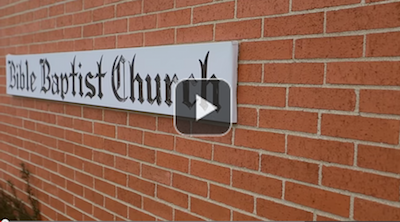NOVEMBER 1 / NOVEMBER 8, 2015
JERUSALEM’S COMING DESTRUCTION
INTRODUCTION:
1. When Jesus spoke of the destruction of the temple, His disciples were clearly stunned and desired to know how they would know when this awful event was near at hand. Therefore, as He sat upon the Mount of Olives, with the temple in full view (Verse 3), there, four of them asked Him in private, “Tell us, when shall these things be? And what shall be the sign when all these things shall be fulfilled?” (Verse 4)
2. He then gave several things that would signal that the time was near. (Verses 5-13)
a) Many false Christs would appear.
b) There would be great commotions and wars among nations. (Secular historians confirm that this was so.)
c) They would see awful upheavals in nature. (This too was confirmed by historians.)
d) Christian persecutions would increase.
3. Having told them what to look for as signals, the Lord tells them that they shall see Jerusalem besieged, and warns His disciples to flee from the bloody catastrophe.
I. THE LAST SIGN TO BE SEEN BEFORE THE DESTRUCTION OF JERUSALEM WOULD BE “THE ABOMINATION OF DESOLATION” STANDING IN THE HOLY PLACE. (VERSE 14; MATT. 24:15)
A. THIS IS “THE ABOMINATION OF DESOLATION,” WHICH DANIEL HAD SEEN IN HIS SEVENTY WEEKS VISION. (DAN. 9:25-27)
1. When they would see the Roman ensign, “standing where it ought not,” i.e. “standing in the holy place,” (Matt. 24:15) they would know the time had come.
2. The Jews had rejected Christ as an abomination who would have been their salvation, God now brought upon them an abomination that would be their desolation, by which their sacrifice and offering would be made to cease.
3. This army of “the land that thou abhorrest” (Isa. 7:16) now stands where it ought not to stand, and would never have been suffered there to stand, had Jerusalem not profaned the crown of their holiness. “The heathen entered into her sanctuary, whom thou didst command that they should not enter into the congregation,” (Lam. 1:10); but their sin made the breach at which the glory went out, and the abomination of desolation broke in.
B. JESUS WARNED THAT WHEN THIS SHOULD OCCUR THEIR ONLY SAFETY WOULD BE IN FLEEING THE CITY. “THEN LET THEM THAT ARE IN JUDEA FLEE TO THE MOUNTAINS.”
1. Ordinarily the Jews would have sought safety within the walls of their fortified city, but no longer was Jerusalem a safe sanctuary for them.
2. They had rejected their true City of Refuge, and thus, those walls could not prevent the insurgence of this great enemy. Even the holy place itself was taken by the enemy.
3. For the church God has appointed salvation for her walls and bulwarks. (Isa. 26:1) God Himself is our refuge and strength. (Psa. 46:1) Our safety is in remaining faithful to Him.
II. THE LORD GAVE SPECIFIC INSTRUCTIONS, ESPECIALLY FOR ALL THAT WERE TRUE BELIEVERS IN JUDEA. (VERSES 14c-23)
A. ALL MUST TAKE THEIR FLIGHT WITHOUT DELAY. (VERSES 14c-16)
1. They would soon see their city wholly shut up by the Roman armies, so that none would either go in or come out.
2. They must therefore let all possessions go, if need be, in order to save their lives.
3. Whether in the house or in the field, no material possession was worth the risk of any delay. (Verses 15, 16)
B. THEY MUST TAKE THEIR FLIGHT, AVOIDING ALL ADDITIONAL HARDSHIPS, IF POSSIBLE. (VERSES 17, 18)
1. Women who were pregnant, or who had nursing babies, or small children to care for, clearly, had additional, but unavoidable burdens to deal with. Thus, He says, “Woe to them.”
2. Winter travel presented its own hardships, especially in the higher elevations where they were going. Thus He says, “Pray ye that your flight be not in winter.”
3. These matters were not within their control, but they were to make them matters of prayer. “But pray ye…”
C. REGARDLESS OF THE DIFFICULTIES FACING THEM, STAYING PUT WAS NOT AN OPTION, SINCE THE COMING DESTRUCTION WAS UNPRECEDENTED. (VERSES 19, 20)
1. We know from the writings of Josephus and others that the predictions of unprecedented tribulation and affliction were not exaggerated.
2. The Sovereign Lord did cut the horrors of the siege short. He shortened them for the elect sake. Those who had been hated and persecuted by their countrymen became the means of preserving them from complete annihilation.
3. This wicked world hates so very much the church of Jesus Christ, yet it owes more to it than it could ever think possible. How many judgments have been withheld or shortened for the elect’s sake.
a) Where would this world be without the prayers of God’s people?
b) God would have spared even Sodom and Gomorrah for sake of ten righteous souls. (Gen. 18:32)
D. JESUS WARNS OF THE RISE OF RELIGIOUS FRAUDS WHO THROUGH SIGNS AND WONDERS WOULD BE VERY SEDUCTIVE. (VERSES 21-23)
1. These false Christs were powerful deceivers. The ability to do great wonders does not mean that one is sent from God. (Matt. 7:22)
2. Others were promoting these frauds. “If any man shall say to you lo, here is Christ; or lo, he is there…” (Vs 21)
3. No doubt, many fell for them who were professed Christians. Sadly this is often the case.
4. Every generation has its share of false prophets, and there seems never to be a shortage of gullible people (even professing Christians) who get sucked in by them. (II Pet. 2:1-3) Many find their spectacular claims irresistible. Thankfully, God’s true elect people shall not be deceived even by the cleverest to them. (Verse 22)
5. Let the elect therefore take heed to that which He has revealed in His Word. (Verse 23)
a) Being forewarned, let us not be taken by surprise; let us not be caught in their snare.
b) Being forewarned, let us be prepared to identify and denounce false prophets, whose claims and teachings make manifest their fraudulence.
6. “It is a grand thing to have such faith in Christ that there is none left for imposters.” (Spurgeon)
III. USING FIGURATIVE LANGUAGE THE LORD DESCRIBES THE ABOMINATION OF DESOLATION AND ITS IMMEDIATE EFFECT. (VERSES 24-27)
A. THE FALL OF JERUSALEM IS DESCRIBED AS A CATASTROPHE THAT WILL LEAVE IT DESTITUTE OF ALL FORMER GLORY AND USEFULNESS. (VERSES 24, 25)
1. The sun darkened represents the removal of God’s light and favor.
2. The moon cannot give its light, without the sun. Thus Israel is no longer a reflector of the light of God’s glory.
B. JESUS SEEMS ALSO TO MINGLE PROPHESIES THAT PERTAIN TO HIS SECOND COMING. (VERSES 24-27)
1. These words had a certain fulfillment in 70 A.D. This we know from what He said as to the time frame in Vs. 30. He clearly said that that present generation would not pass “till all these things be done!”
a) He came in clouds of judgment in power and great glory. (Verse 26)
b) Great mourning and wailing was heard in all the tribes of Israel. (Matt. 24:30)
c) The sounding of the Gospel trumpet was calling God’s elect from all quarters. (Verse 27; Matt. 24:31)
2. This language as used elsewhere refers to the second coming. (Matt. 26:64; Rev. 1:7; Matt. 25:31; Mark 8:38; I Cor. 15:52; I Thess. 4:16; Matt. 13:49; II Pet. 3:10f)
a) Perhaps He intended the destruction of Jerusalem to be seen as a microcosm of the judgment of the last day.
b) Luke adds: “Then look up, and lift up your heads for your redemption draweth nigh.” (Luke 21:28)
IV. THE LORD AGAIN AFFIRMS THE TIME FRAME AND CERTAINTY OF THIS PROPHECY. (VRS. 28-31)
A. REGARDING THE SIGNS OF THE TIME OF THIS JUDGMENT, HE HAD THEM LEARN A PARABLE OF THE FIG TREE (VERSES 28, 29) AND OF ALL TREES. (LUKE 21:31)
1. This is A parable of the fig tree. He used the fig tree to teach other object lessons before.
2. The point that He seems to be making here is that as spring immediately precedes summer, the signs He had given would come immediately before the coming judgment of Jerusalem. (Verses 28, 29)
B. CONCERNING THE NEARNESS OF THIS TERRIBLE JUDGMENT HE EMPHASIZED AGAIN THAT IT WOULD BE SEEN BY THEIR GENERATION. (VERSE 30)
C. THE PROPHECIES GIVEN IN THIS DISCOURSE WOULD MOST CERTAINLY COME TO PASS, AND THAT BEYOND ALL QUESTION. (VERSE 31)
V. JESUS CONCLUDES WITH WORDS WHICH PERTAIN MOST DEFINITELY TO HIS SECOND COMING. (VERSES 32-37)
A. THIS COMING EVENT IS DISTINGUISHED FROM JERUSALEM’S DESTRUCTION. “BUT OF THAT DAY…” (VERSE 32)
1. It is distinguished not only by the use of the conjunction “but,” (which indicates a contrast), but also by the use of the remote demonstrative pronoun “that,” as opposed to the near demonstrative pronoun “this,” which appears in Verse 30 as indicating the nearness of the event of Jerusalem’s destruction.
2. This distinction is even more obvious in Matthew’s account, where the Lord is clearly responding to a twofold question. (Matt. 24:3)
a) The first question pertained to what Jesus had said about the destruction of the temple in the previous verse. “When shall these things be?”
b) The second question (whether they knew it or not) pertained to a far greater judgment to come much later. “And what shall be the sign of thy coming, and of the end of the world?”
c) Although the first may have been a microcosm of the second, and even contained apocalyptic language that pertains to the greater event, Jesus’ answer makes a clear distinction between the two. (Matt. 24:34, 36)
B. THE TIME OF CHRIST’S COMING AND OF THE END OF THE WORLD (MATT. 24:3b) IS UNKNOWN TO MEN AND ANGELS. (VERSE 32)
1. No creature is privy to that information.
2. Not even to the Son of Man was it revealed. It is certain that Christ as God was not ignorant of anything, but the divine wisdom which dwelt in Him did communicate itself to His human soul according to the divine pleasure. This is to us a great mystery.
3. Only the Father knows the day and the hour of Christ’s coming and the events that will accompany it.
C. OUR DUTY IN LIGHT OF BOTH THE CERTAINTY AND THE UNCERTAINTY REGARDING HIS COMING IS GIVEN. (VERSES 33-37)
1. We must take heed to His Word, and we must watch and pray. (Verse 33)
2. Since our Master is gone away and left us a trust, we must be faithful servants, ready to give an account at any moment. (Verse 34, 35; see Matt. 25:14ff; Luke 19:12ff)
3. We are to live in constant expectation of His coming. (Verse 36, 37; see Matt. 25:1ff)


